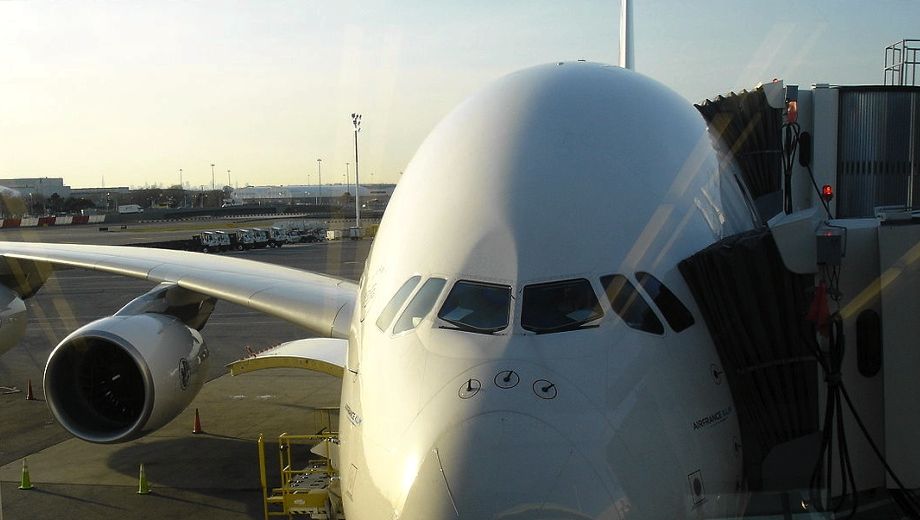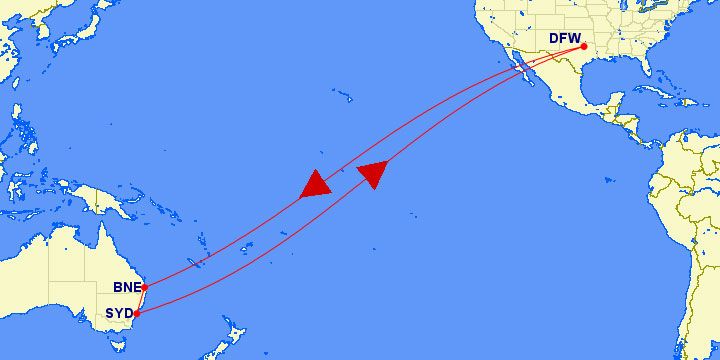Which is better & what's the difference: nonstop or direct flights?

One of the questions we get asked a lot is about the difference between nonstop flights and direct flights, and how they differ from connecting flights.
As it turns out, the differences are important -- and could save you hours on your next journey.
Since these are technical terms used by airlines, nonstop, direct and connecting flights have specific characteristics.
Nonstop flights are flights that literally do not stop between your origin and destination airports, while direct flights stop at another airport, but continue on with the same flight number. Connecting flights are where you change plane and flight number at that other airport.
A good example of the difference is Qantas' flights to Dallas/Fort Worth. QF7 from Sydney to Dallas is a nonstop flight: you take off from Sydney and land in Dallas. QF8 from Dallas to Sydney is direct, but via Brisbane: you take off from Dallas and land in Brisbane to refuel, then reboard the same plane to Sydney.
A connecting flight would be continuing on from Brisbane to Melbourne on a separate Qantas flight number, on a different plane.
Nonstop flights, where they're available, are usually a faster and more convenient option. You get on the plane, and you get off the plane. They're the first choice of most business travellers for routes where the plane can fly long enough and there are enough passengers to make it worthwhile for the airline.
Why direct flights are useful
Direct flights use at least two legs to get where you're going, and usually -- but not always -- continue on with the same plane.
For example, Emirates flies the same Boeing 777 planes between Melbourne and Dubai nonstop (EK406/407) and direct (EK408/409 via Kuala Lumpur). So you'd probably want to pick the nonstop flight there.
But as a counter-example, Qantas flights QF107/108 between Sydney and New York use a Boeing 747 between Sydney and Los Angeles, then an Airbus A330 between Los Angeles and New York.
Sometimes when direct flights stop, you can stay on board, but often you'll have to disembark (with all your carry-on belongings) so that the plane can be refueled, cleaned and security-checked.
Direct flights are usually better than non-direct connections, though, because the time you spend on the stop is kept to the absolute minimum. It's nearly an hour shorter to New York with the direct Qantas flight than by connecting to American Airlines in LA, for example.
You usually won't need to check in separately for the continuing part of the flight either, and if there isn't a change of plane then the gate is likely to be the same even if you have to disembark during the stopover.
Your onward direct flight will almost always be held back for late departure if the first leg is delayed, which is another tick in the plus column.
And where direct flights are shorter hops tagged on to another longer flight, you'll generally see better, more comfortable seats across the plane -- and especially in business class.
So, overall, we tend to pick flights in this order:
- Nonstop flights
- Direct flights
- Connecting flights
How about you? Are there routes where you'd pick a direct flight over a nonstop -- or a connecting flight instead of either? Share your thoughts in the comments below or on Twitter: @AusBT.

Qantas - Qantas Frequent Flyer
18 May 2011
Total posts 233
Thankyou for that article, you've confirmed what was my understanding of how things work. But I was wondering if sometime in the future you can do the same article but from a points perspective.
For example, will you earn more points if you fly connecting flights instead of direct?
03 Jan 2011
Total posts 665
Absolutely -- that's on our list. In answer to your question, the situation varies from program to program, and whether the flight is on the airline's own flights, codeshare flights or alliance partner flights.
But you're more likely to earn more points for connecting flights, if the connecting flight distance is longer and if your program calculates points based on flight distances rather than city pair distances or ticket price.
15 Apr 2011
Total posts 580
fxdxdy - booking with QF to LHR, you earn more status credits booking SYD-SIN and SIN-LHR on the same booking, same through flights and at the same cost when compared with just booking SYD-LHR. Generally the only reason you will earn more points is because the trip distance is longer (so it takes more time, which is the counter) - though, on domestic flights you can use the minimum earn to rack up points. Fly SYD-BNE-MEL and you earn 2,000 points compared with 1,000 direct.
Anyway, travelling for work I tend to just want to get there so will pick the quickest and more convenient option (be it direct/nonstop/connecting). Travelling for leisure (depending on how long I have off) I tend to favour a slower journey, and figure that if the cost is the same then I might as well enjoy the journey more. And it's nice to get more regular breaks if travelling in Y...
05 Sep 2011
Total posts 65
Fine... until you use United or Continental flights. In some cases your journey shows only one flight number, so you would assume it's a non-stop or direct flight... but it actually involves changing to a connecting flight, because some of their domestic and international flights have the same flight number.
An example is Chicago ORD to London LHR, flight UA922. It involves changing aircraft at Washington IAD, as though connecting to a flight with a different flight number.
I've come across other examples of this. Flight number UA837 is used for DFW to SFO, SFO to NRT and NRT to TPE. So flying on one flight number could mean changing planes twice.
Hi Guest, join in the discussion on Which is better & what's the difference: nonstop or direct flights?